"The Creamy Kind" by Spencer Allen
"A Goat Has Two Horns" by Barbara Davies
"Ascendancy of Blood" by Eugie Foster
"Slipstream" by Doug Hewitt
I must disclose that I am not a big fan of horror fiction, as I feel the genre seems to struggle to innovate and excite. It has been my perception that horror too often relies on old tropes, morality tales, and settings that are so familiar that they have lost their power to compel. Since some of these chapbooks are horror stories, I feel this influenced my impressions, and I have tried to compensate for my acknowledged prejudices.
 "Murdered by Human Wolves” is sandwiched between an intriguing foreword and an eerie interview with paranormal researcher Mary Franklin. The foreword tantalizes with “based on a true story” tidbits, and the un-embellished interview with Franklin should send shivers up the spine of a non-skeptic. I applaud author Steven E. Wedel for his efforts to develop a gripping story from the factual elements of Katherine Cross’ life and times. Wedel’s tale begins with a very realistic introduction to small-town life. The dialogue is effective. Wedel obviously knows how to start a short story with unostentatious strength. In fact, until Chapter 3, I was slipping deeper into the story. The character responsible for pushing me back out of it was Dr. Yates, who possessed a vicious intensity and callousness not suited to the dusty Oklahoma country setting. Yates’ jarring portrayal is one-dimensional. The story evolves predictably from there, with morality tale elements common to most horror stories. Wedel’s writing, while filled with successful dialogue and an effective setting, was lacking in plot and character development. Anyone developing a story from a pre-existing framework is somewhat restrained by it, so I don’t necessarily think that the predictability is likely to extend to the rest of this author’s work. While I did not find "Murdered by Human Wolves" exciting, the “based on a true story” elements made the chapbook innovative enough to keep me reading. (Chapbook: $5.99)
"Murdered by Human Wolves” is sandwiched between an intriguing foreword and an eerie interview with paranormal researcher Mary Franklin. The foreword tantalizes with “based on a true story” tidbits, and the un-embellished interview with Franklin should send shivers up the spine of a non-skeptic. I applaud author Steven E. Wedel for his efforts to develop a gripping story from the factual elements of Katherine Cross’ life and times. Wedel’s tale begins with a very realistic introduction to small-town life. The dialogue is effective. Wedel obviously knows how to start a short story with unostentatious strength. In fact, until Chapter 3, I was slipping deeper into the story. The character responsible for pushing me back out of it was Dr. Yates, who possessed a vicious intensity and callousness not suited to the dusty Oklahoma country setting. Yates’ jarring portrayal is one-dimensional. The story evolves predictably from there, with morality tale elements common to most horror stories. Wedel’s writing, while filled with successful dialogue and an effective setting, was lacking in plot and character development. Anyone developing a story from a pre-existing framework is somewhat restrained by it, so I don’t necessarily think that the predictability is likely to extend to the rest of this author’s work. While I did not find "Murdered by Human Wolves" exciting, the “based on a true story” elements made the chapbook innovative enough to keep me reading. (Chapbook: $5.99)
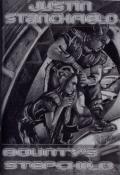 "Bounty’s Stepchild" by Justin Stanchfield is a gripping mix of military sci-fi and prison drama. The narrator’s voice sets the tone for the tale with brutal, short sentences, tough talk that rings true, and devastating metaphors. The setting is equally gripping. Prisoners are housed in an orbital prison known as the Well, where they float between “cold, breath-rusted walls” until they are drafted to fight “downtown,” in the dirty planet-side war. The prisoners have combat-trained personalities jacked into their brains for the missions. But after a mission is complete, the “Assist” is stripped away, and the prisoners are relegated back to the dank, drifting confines of the Well. Brian Laris, a weary prisoner/soldier, has been tapped for a special duty. His brain profile is suited to host a special Assist, the long-dead legendary General Braxton, who exhibits an odd concern for the well-being of Laris and the other “troops.” Braxton suspects the brass of unnecessarily prolonging the war, and conflict begins to develop between the hard-nosed general and the civilian masters of the prison. All the while, a wary bond begins to grow between prisoner Laris and his implanted Assist. “Bounty’s Stepchild” was intense, exciting, and well written from beginning to end. A few sci-fi staples that often interfere with believability must be overlooked, such as the improbability of interplanetary travel, but the distinct language, bold characters, stark settings, and tense action lift this story into a true success. Good job, Stanchfield. (Chapbook: $4.49)
"Bounty’s Stepchild" by Justin Stanchfield is a gripping mix of military sci-fi and prison drama. The narrator’s voice sets the tone for the tale with brutal, short sentences, tough talk that rings true, and devastating metaphors. The setting is equally gripping. Prisoners are housed in an orbital prison known as the Well, where they float between “cold, breath-rusted walls” until they are drafted to fight “downtown,” in the dirty planet-side war. The prisoners have combat-trained personalities jacked into their brains for the missions. But after a mission is complete, the “Assist” is stripped away, and the prisoners are relegated back to the dank, drifting confines of the Well. Brian Laris, a weary prisoner/soldier, has been tapped for a special duty. His brain profile is suited to host a special Assist, the long-dead legendary General Braxton, who exhibits an odd concern for the well-being of Laris and the other “troops.” Braxton suspects the brass of unnecessarily prolonging the war, and conflict begins to develop between the hard-nosed general and the civilian masters of the prison. All the while, a wary bond begins to grow between prisoner Laris and his implanted Assist. “Bounty’s Stepchild” was intense, exciting, and well written from beginning to end. A few sci-fi staples that often interfere with believability must be overlooked, such as the improbability of interplanetary travel, but the distinct language, bold characters, stark settings, and tense action lift this story into a true success. Good job, Stanchfield. (Chapbook: $4.49)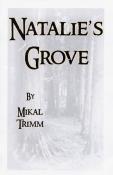 Since I just mentioned “Natalie’s Grove,” by Mikal Trimm, I’d best end suspense by getting its lackluster review out of the way. “Grove” actually starts strongly, with believable interaction between characters that readers are likely to recognize from real life. The use of such realistic dialogue and situations is a good way to bring the reader into a horror story and to help the reader suspend belief once the supernatural elements begin to show themselves. Unfortunately, Trimm lost control of the story by page 20 or so, and the tale devolves into a confusing welter that fails to drive home a “single effect.” When Edgar Allan Poe wrote horror so effectively, he focused all the elements of fiction: plot, character, setting, tone, etc., upon developing the “single effect.” In many tales, the single effect was the “awe of fear,” in which Poe would slowly build suspense to a maddening climax. Unlike in Poe’s work, Trimm falters at the end of “Grove,” failing to fuse the elements of the tale to create a strong theme, and failing to create strong emotion in the reader. I found this especially unfortunate because I thought the story started well. (Chapbook: $2.99)
Since I just mentioned “Natalie’s Grove,” by Mikal Trimm, I’d best end suspense by getting its lackluster review out of the way. “Grove” actually starts strongly, with believable interaction between characters that readers are likely to recognize from real life. The use of such realistic dialogue and situations is a good way to bring the reader into a horror story and to help the reader suspend belief once the supernatural elements begin to show themselves. Unfortunately, Trimm lost control of the story by page 20 or so, and the tale devolves into a confusing welter that fails to drive home a “single effect.” When Edgar Allan Poe wrote horror so effectively, he focused all the elements of fiction: plot, character, setting, tone, etc., upon developing the “single effect.” In many tales, the single effect was the “awe of fear,” in which Poe would slowly build suspense to a maddening climax. Unlike in Poe’s work, Trimm falters at the end of “Grove,” failing to fuse the elements of the tale to create a strong theme, and failing to create strong emotion in the reader. I found this especially unfortunate because I thought the story started well. (Chapbook: $2.99)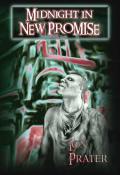 The next story is one of my favorites of the Scrybe collection. The setting is the true star of Lon Prater’s “Midnight in New Promise.” The author offers a rich fantasy landscape, made unique from the typical fantasy doorstop by the industrial and intrigue elements of the tale. New Promise is an overcrowded island crammed with humans, elves, orcs, gnomes, and other races. The air is foul with industrial pollution. Bizarre city policies have resulted in the criminalization of “God worship,” thus allying underground priests with “protection” gangs. The political machinations of the labor union “One-Wagers,” pseudo-rational Sages of the Undying Spark, and various crime syndicates are intricate and interwoven. If this sounds promising to you, then I assure you that Prater delivers on his promise. Simple details, like the name of the local ale, and how it should be (but isn’t) brewed, add to the verisimilitude of this tale, making it easy to adjust to the fantasy elements. These details flow nicely throughout the story, building the setting slowly and thoroughly, and positioning New Promise for future adventures. Prater draws his protagonist, Grevien, as a bit of an anti-hero, cynical and dirty, but ultimately governed by his own code of ethics. I enjoyed the way Prater portrayed Grevien as a weary “everyman,” which made him much easier to identify with than some ultra-skilled warrior (a trap into which many writers fall.) I did wish that the author had ended the story about a page or two earlier, since the final conversation between Piglet and Grevien fell flat, but as a whole, I was very pleased with “Midnight” and I look forward to the other New Promise tales. (Chapbook: $3.99)
The next story is one of my favorites of the Scrybe collection. The setting is the true star of Lon Prater’s “Midnight in New Promise.” The author offers a rich fantasy landscape, made unique from the typical fantasy doorstop by the industrial and intrigue elements of the tale. New Promise is an overcrowded island crammed with humans, elves, orcs, gnomes, and other races. The air is foul with industrial pollution. Bizarre city policies have resulted in the criminalization of “God worship,” thus allying underground priests with “protection” gangs. The political machinations of the labor union “One-Wagers,” pseudo-rational Sages of the Undying Spark, and various crime syndicates are intricate and interwoven. If this sounds promising to you, then I assure you that Prater delivers on his promise. Simple details, like the name of the local ale, and how it should be (but isn’t) brewed, add to the verisimilitude of this tale, making it easy to adjust to the fantasy elements. These details flow nicely throughout the story, building the setting slowly and thoroughly, and positioning New Promise for future adventures. Prater draws his protagonist, Grevien, as a bit of an anti-hero, cynical and dirty, but ultimately governed by his own code of ethics. I enjoyed the way Prater portrayed Grevien as a weary “everyman,” which made him much easier to identify with than some ultra-skilled warrior (a trap into which many writers fall.) I did wish that the author had ended the story about a page or two earlier, since the final conversation between Piglet and Grevien fell flat, but as a whole, I was very pleased with “Midnight” and I look forward to the other New Promise tales. (Chapbook: $3.99)
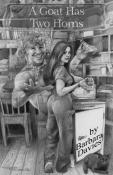 Barbara Davies’ “A Goat Has Two Horns” was fun to read, primarily because of its British flavor. I haven’t read many short tales written in the accent from across the pond, so I found myself caught up in the slightly different slang and sentence structure. I actually had to read it a few times to make sure I was reviewing the story and not just the narrator. Overall, the story was fair—a bit of a fluff mystery/fantasy–and that the plot elements were executed appropriately. I took some issue with the protagonist doing her research in a bunch of esoteric books that she just happened to have, rather than doing the research on the Internet, which would have been much more plausible. Also, there is little or no character development, as the primary focus is solving the mystery of the magical refrigerator. Since the mystery is solved quickly and very little tension develops through the tale, I was left with the impression that the story was light and forgettable fare—not bad, but not compelling. The reason the story manages to succeed on some small level is the delightful British tone, and the mundane responses of the characters to the world-changing potential of the magic ‘fridge. The notion that the workers initially used the power of the fridge to satisfy their craving for ice cream, rather than end world hunger, is both sadly and humorously accurate. (Chapbook: $2.99)
Barbara Davies’ “A Goat Has Two Horns” was fun to read, primarily because of its British flavor. I haven’t read many short tales written in the accent from across the pond, so I found myself caught up in the slightly different slang and sentence structure. I actually had to read it a few times to make sure I was reviewing the story and not just the narrator. Overall, the story was fair—a bit of a fluff mystery/fantasy–and that the plot elements were executed appropriately. I took some issue with the protagonist doing her research in a bunch of esoteric books that she just happened to have, rather than doing the research on the Internet, which would have been much more plausible. Also, there is little or no character development, as the primary focus is solving the mystery of the magical refrigerator. Since the mystery is solved quickly and very little tension develops through the tale, I was left with the impression that the story was light and forgettable fare—not bad, but not compelling. The reason the story manages to succeed on some small level is the delightful British tone, and the mundane responses of the characters to the world-changing potential of the magic ‘fridge. The notion that the workers initially used the power of the fridge to satisfy their craving for ice cream, rather than end world hunger, is both sadly and humorously accurate. (Chapbook: $2.99)
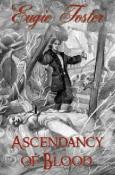 “Ascendancy of Blood” is Eugie Foster’s retelling of the fairy tale, “Sleeping Beauty.” But this retelling is sinister, a children’s tale no more, fraught with peril and filled with blood. This is one of Foster’s more restrained stories as she stays within a basic plot framework in order to keep her tale recognizable as a descendent of “Sleeping Beauty.” I felt that the framework restricted Foster’s range, and kept her story within the realm of the predictable. I prefer Foster’s work when it is fully original, but despite its predictability, “Ascendancy” does have some high points. Foster’s description of the journey through the tangle of vampiric plants engulfing the obligatory castle is lovely. “Rich purple and deep cerulean pulsed across the surface of lace-veined leaves. Night blooms rippled in shades of swirling indigo.” As an interesting contrast to the usual horror tale, Foster writes with an intermittently humorous tone. Some of her metaphors and analogies seem intended to function as useful eyeball kicks (words designed to evoke a vivid image or frame), but others seem to be downright funny. At times I wasn’t quite sure if she was poking fun at her own horror knock-off of “Sleeping Beauty.” An example: “There should be a word other than blue to describe the color of those eyes, Jiri thought. If they were blue, then the sky was black and the ocean gray.” Maybe it was just my mood, but I wasn’t sure whether to let out a peal of laughter at the inherent cheesiness of the moment, or to get the point that Nadhera had super-sexy blue eyes. (I went with both.) While this story is not among Foster’s best work, it is a serviceable retelling and reinterpretation of a classic fairy tale. (Chapbook: $3.49) (Reviewer disclosure: Eugie Foster is editor of Tangent Online, but this did not influence the content of the review.)
“Ascendancy of Blood” is Eugie Foster’s retelling of the fairy tale, “Sleeping Beauty.” But this retelling is sinister, a children’s tale no more, fraught with peril and filled with blood. This is one of Foster’s more restrained stories as she stays within a basic plot framework in order to keep her tale recognizable as a descendent of “Sleeping Beauty.” I felt that the framework restricted Foster’s range, and kept her story within the realm of the predictable. I prefer Foster’s work when it is fully original, but despite its predictability, “Ascendancy” does have some high points. Foster’s description of the journey through the tangle of vampiric plants engulfing the obligatory castle is lovely. “Rich purple and deep cerulean pulsed across the surface of lace-veined leaves. Night blooms rippled in shades of swirling indigo.” As an interesting contrast to the usual horror tale, Foster writes with an intermittently humorous tone. Some of her metaphors and analogies seem intended to function as useful eyeball kicks (words designed to evoke a vivid image or frame), but others seem to be downright funny. At times I wasn’t quite sure if she was poking fun at her own horror knock-off of “Sleeping Beauty.” An example: “There should be a word other than blue to describe the color of those eyes, Jiri thought. If they were blue, then the sky was black and the ocean gray.” Maybe it was just my mood, but I wasn’t sure whether to let out a peal of laughter at the inherent cheesiness of the moment, or to get the point that Nadhera had super-sexy blue eyes. (I went with both.) While this story is not among Foster’s best work, it is a serviceable retelling and reinterpretation of a classic fairy tale. (Chapbook: $3.49) (Reviewer disclosure: Eugie Foster is editor of Tangent Online, but this did not influence the content of the review.) Doug Hewitt’s “Slipstream” wraps up this reviewed bunch of Scrybe Press chapbooks. Hewitt’s dialogue is hard-bitten and terse when his protagonist, Scott, verbally spars with Sergeant Rakestraw, who comes to “draft” Scott back into service in special operations. The dialogue between the two characters was realistic, character-building, and incredibly efficient: a great example of how to use dialogue in short fiction. Scott’s grip on sanity is not terribly firm, and I was certain his disabilities would result in disaster for his mission. But Hewitt tossed in some elegant surprises, and an unlikely hero begins to emerge through the tale. I can’t stress enough how important it is for short fiction writers to avoid the clichés found in so many long novels. Short fiction doesn’t provide enough space to work through characters in arduous detail, so an edgy character drawn in a few, efficient strokes, while still leaving room for some interpretation, is vital if the author wants to engage the jaded reader. Hewitt succeeded in this story, and I enjoyed the tale all the more for it. (Chapbook: $2.99)
Doug Hewitt’s “Slipstream” wraps up this reviewed bunch of Scrybe Press chapbooks. Hewitt’s dialogue is hard-bitten and terse when his protagonist, Scott, verbally spars with Sergeant Rakestraw, who comes to “draft” Scott back into service in special operations. The dialogue between the two characters was realistic, character-building, and incredibly efficient: a great example of how to use dialogue in short fiction. Scott’s grip on sanity is not terribly firm, and I was certain his disabilities would result in disaster for his mission. But Hewitt tossed in some elegant surprises, and an unlikely hero begins to emerge through the tale. I can’t stress enough how important it is for short fiction writers to avoid the clichés found in so many long novels. Short fiction doesn’t provide enough space to work through characters in arduous detail, so an edgy character drawn in a few, efficient strokes, while still leaving room for some interpretation, is vital if the author wants to engage the jaded reader. Hewitt succeeded in this story, and I enjoyed the tale all the more for it. (Chapbook: $2.99)
In general, the short stories in this collection used atypical protagonists, everymen (or everywomen), unscrupulous and imperfect types rather than relying on "fantasy doorstop" archetypes. However, some authors were more adept at using dialogue and plot to build coherent tension, and others were trapped by limited plot structures. As a result, the collection had, in my opinion, a few unsuccessful attempts, a few fair stories, and only a couple of stand-out tales. If this collection is representative of the efforts of most of Scrybe’s authors, then it is likely that the reader will be gambling when buying a Scrybe book. Perhaps the story will be great, but perhaps not.
Publisher: Scrybe Press (2004)
